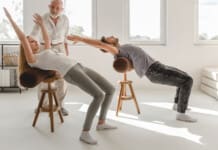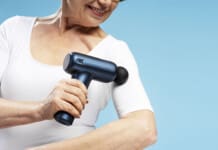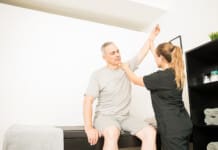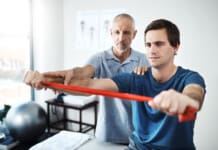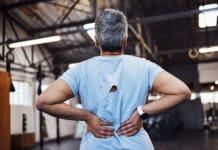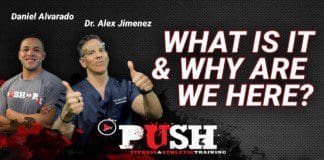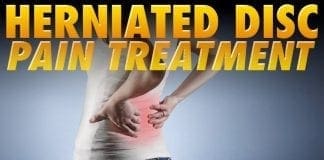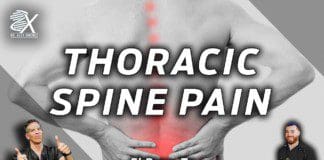Indoors or out, bicycling can be great for an individual’s back with proper preparation. With everything that is going on, many individuals are getting creative with their workouts. Many are turning to home or outdoor exercise. Bicycling is considered a safe activity. According to the NPD Group, bicycle sales have tripled in sales since March.
However, back pain could be affected by a biking routine. Whether a newfound hobby or regular activity, individuals need to prepare and plan ahead before getting out on the trails or on a stationary exercise bike and avoid developing or aggravating back pain. Here are a few essential tips to create a safe and back-healthy bicycling experience.
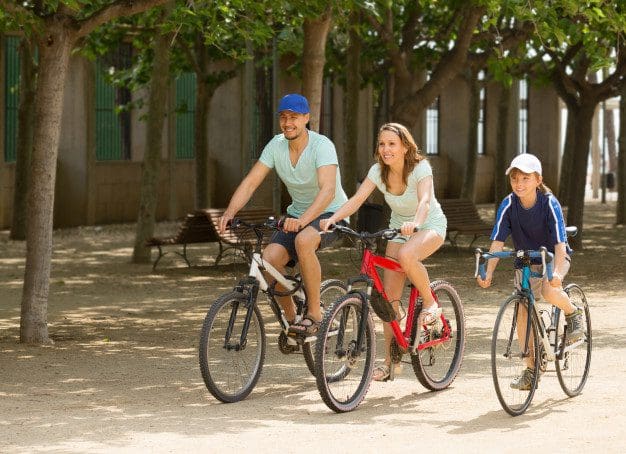
Table of Contents
Understanding back pain
Bicycling is a type of aerobic exercise that can help with overall health. Done regularly it can improve the heart and lungs’ performance. Other areas of the body like the spine along with the musculoskeletal system, also benefit. For some, it is an even better form of exercise than jogging or aerobics, as it can be less jolting on the body and spine.
Back pain during cycling is rare except when individuals try to push the intensity level beyond their normal workout. If there is back pain from an unknown cause it should be looked into by a doctor, physical therapist, or chiropractor before beginning a regular bicycling regimen.
There are certain spinal conditions where bicycling can benefit. Individuals that bike ride with conditions like degenerative disc disease and lumbar spinal stenosis can experience relief in the back and legs, as it’s an exercise in which flexes the back. But there are spinal instability conditions like spondylolisthesis, that create forward flexion and can worsen back and leg pain. Therefore it is essential to attain a diagnosis before committing to regular bicycling.
Talk to a Doctor
Before starting any exercise program, talk with your doctor to find out if you are healthy enough for this type of therapeutic workout. Those with present back pain issues also need to be cleared by their doctors. But more than likely if they are already following a treatment plan, their doctor would have them doing some form of stretching/exercise as part of their plan, and they just need to find out if riding a bicycle is OK. Once cleared, even with chronic mild back pain an individual can initiate bicycling into their regimen.
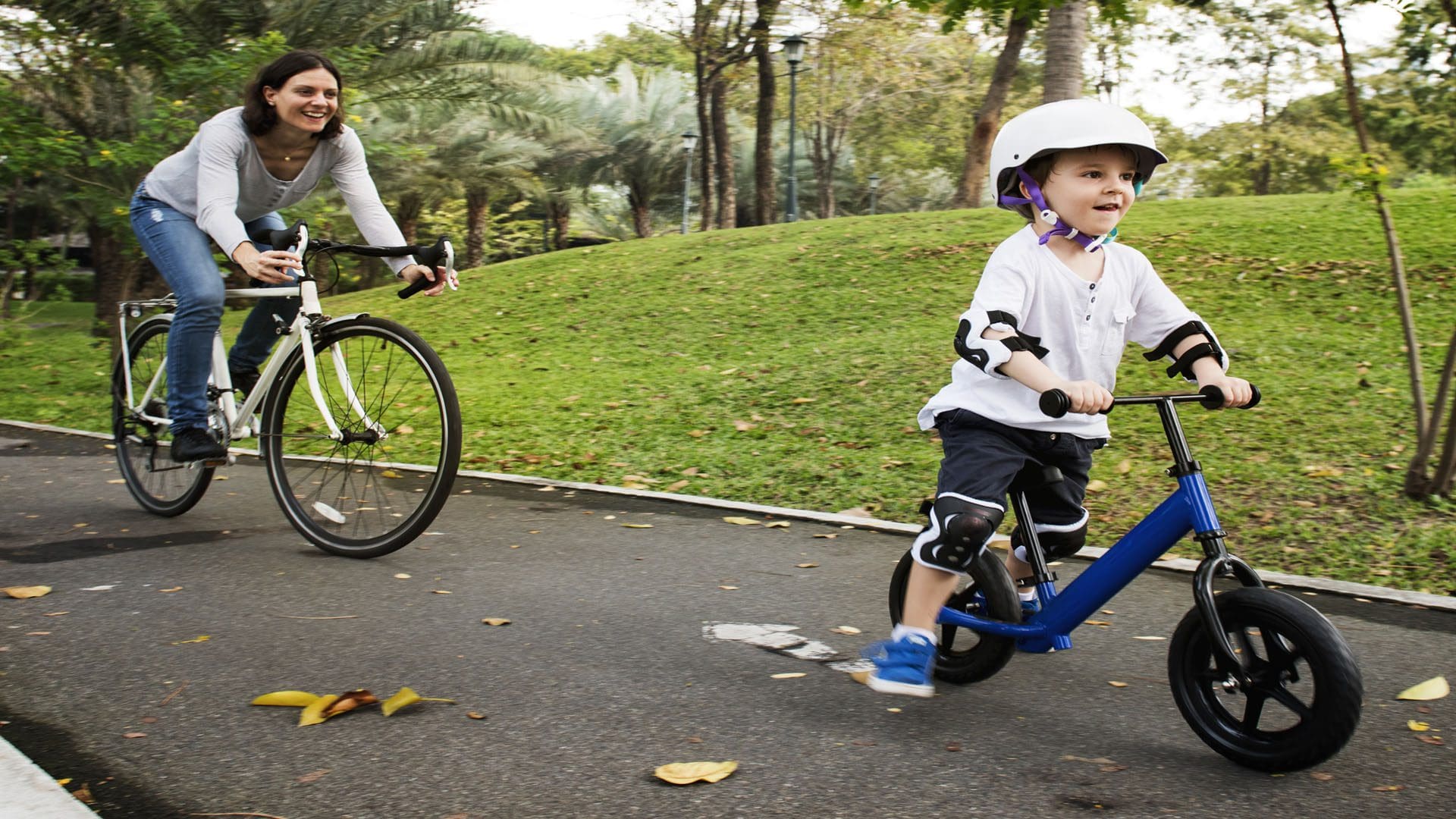
Reasonable workout
In addition to safety basics individuals need to:
- Wear a helmet
- Wear highly-visible clothing
- Get their bike serviced for optimal performance
- Add reflectors
- Add lighting
- Have a workout/training plan
As with any exercise, there should be a training plan that will be sustainable and help to avoid injury. Set small goals, especially when beginning. Go for an achievable distance or workout time. Then gradually build up and don’t rush. Allow yourself to go through the experience, learning as much as you can.
Both indoor and outdoor biking require a thorough warm-up and stretching of the body. This definitely includes the spine, that needs some time to loosen up, properly. A healthy comfortable bike seat or saddle with the proper height for body type and inseam is vital. Being uncomfortable while trying to perform therapeutic exercises plus the added possibility of worsening the injury or creating a new one from a stock seat is not worth the risk. At the end of the ride, cooling down is strongly advised.
Pay attention to form/mechanics
When it comes to biking technique, there is no particular form that is ideal or the best. Always try to be in a position where the spine is comfortable. This type of bicycling is low-impact and should be fluid in motion. Poor posture, jerking motions of the spine, neck, or not using the proper equipment can cause poor mechanics and increase the risk of injury.
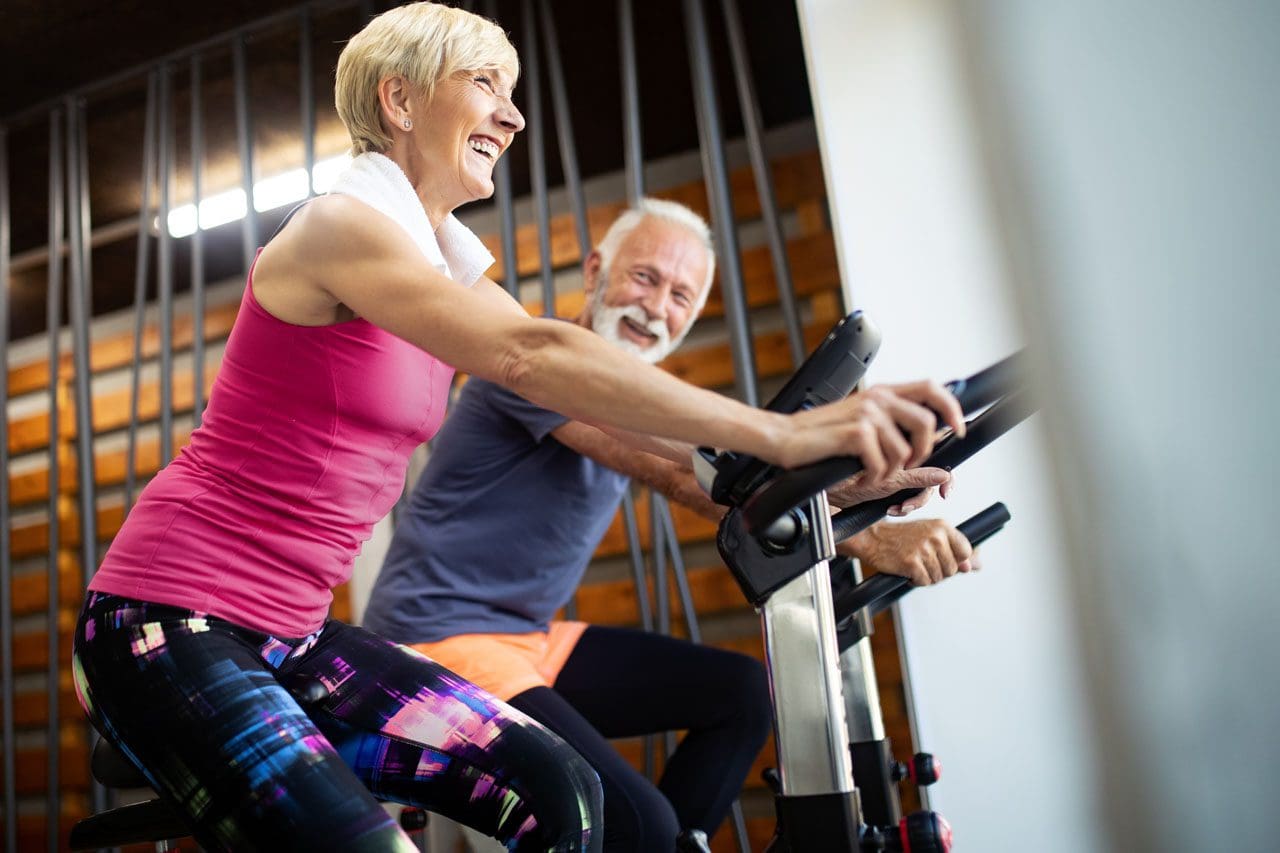
Indoor bicycling
Cycling indoors could be safer for individuals that do not have access to safe bicycling areas or are older. Options include spin class or stationary bike. Both are set in a controlled environment with accidents being a rare occurrence. Outdoor biking happens on the road, bike path, sidewalk, or terrain where there is potential for an accident. With the machine or class, individuals can:
- Choose the workout type
- Fitness level
- Intensity
- Workout duration
- Heart rate
- Resistance
Spin classes also follow the pattern with a warmup, a specific workout, and a cool down. However, there are the mental health benefits of being outdoors. Whatever is best for the individual, it is up to them to ride the bike outdoors, indoors, or a combination of both. It is an excellent form of exercise, as it:
- Promotes cardiorespiratory health
- Is low impact
- Promotes blood flow
- Strengthens the body’s core
- Increases range of motion to the joints
- Improves spinal health
Chiropractic Maintenance Care
Dr. Alex Jimenez’s Blog Post Disclaimer
The scope of our information is limited to chiropractic, musculoskeletal, physical medicines, wellness, and sensitive health issues and/or functional medicine articles, topics, and discussions. We use functional health & wellness protocols to treat and support care for injuries or disorders of the musculoskeletal system. Our posts, topics, subjects, and insights cover clinical matters, issues, and topics that relate and support directly or indirectly our clinical scope of practice.*
Our office has made a reasonable attempt to provide supportive citations and has identified the relevant research study or studies supporting our posts. We also make copies of supporting research studies available to the board and or the public upon request. We understand that we cover matters that require an additional explanation as to how it may assist in a particular care plan or treatment protocol; therefore, to further discuss the subject matter above, please feel free to ask Dr. Alex Jimenez or contact us at 915-850-0900. The provider(s) Licensed in Texas& New Mexico*
Professional Scope of Practice *
The information herein on "Bicycling and Back Pain: What to Know" is not intended to replace a one-on-one relationship with a qualified health care professional or licensed physician and is not medical advice. We encourage you to make healthcare decisions based on your research and partnership with a qualified healthcare professional.
Blog Information & Scope Discussions
Welcome to El Paso's Premier Wellness and Injury Care Clinic & Wellness Blog, where Dr. Alex Jimenez, DC, FNP-C, a Multi-State board-certified Family Practice Nurse Practitioner (FNP-BC) and Chiropractor (DC), presents insights on how our multidisciplinary team is dedicated to holistic healing and personalized care. Our practice aligns with evidence-based treatment protocols inspired by integrative medicine principles, similar to those found on this site and our family practice-based chiromed.com site, focusing on restoring health naturally for patients of all ages.
Our areas of multidisciplinary practice include Wellness & Nutrition, Chronic Pain, Personal Injury, Auto Accident Care, Work Injuries, Back Injury, Low Back Pain, Neck Pain, Migraine Headaches, Sports Injuries, Severe Sciatica, Scoliosis, Complex Herniated Discs, Fibromyalgia, Chronic Pain, Complex Injuries, Stress Management, Functional Medicine Treatments, and in-scope care protocols.
Our information scope is multidisciplinary, focusing on musculoskeletal and physical medicine, wellness, contributing etiological viscerosomatic disturbances within clinical presentations, associated somato-visceral reflex clinical dynamics, subluxation complexes, sensitive health issues, and functional medicine articles, topics, and discussions.
We provide and present clinical collaboration with specialists from various disciplines. Each specialist is governed by their professional scope of practice and their jurisdiction of licensure. We use functional health & wellness protocols to treat and support care for musculoskeletal injuries or disorders.
Our videos, posts, topics, and insights address clinical matters and issues that are directly or indirectly related to our clinical scope of practice.
Our office has made a reasonable effort to provide supportive citations and has identified relevant research studies that support our posts. We provide copies of supporting research studies upon request to regulatory boards and the public.
We understand that we cover matters that require an additional explanation of how they may assist in a particular care plan or treatment protocol; therefore, to discuss the subject matter above further, please feel free to ask Dr. Alex Jimenez, DC, APRN, FNP-BC, or contact us at 915-850-0900.
We are here to help you and your family.
Blessings
Dr. Alex Jimenez DC, MSACP, APRN, FNP-BC*, CCST, IFMCP, CFMP, ATN
email: coach@elpasofunctionalmedicine.com
Multidisciplinary Licensing & Board Certifications:
Licensed as a Doctor of Chiropractic (DC) in Texas & New Mexico*
Texas DC License #: TX5807, Verified: TX5807
New Mexico DC License #: NM-DC2182, Verified: NM-DC2182
Licensed as a Multi-State Advanced Practice Registered Nurse (APRN*) in Texas & Multistate
Multistate Compact RN License by Endorsement (42 States)
Texas APRN License #: 1191402, Verified: 1191402 *
Florida APRN License #: 11043890, Verified: APRN11043890 *
* Prescriptive Authority Authorized
ANCC FNP-BC: Board Certified Nurse Practitioner*
Compact Status: Multi-State License: Authorized to Practice in 40 States*
Graduate with Honors: ICHS: MSN-FNP (Family Nurse Practitioner Program)
Degree Granted. Master's in Family Practice MSN Diploma (Cum Laude)
Dr. Alex Jimenez, DC, APRN, FNP-BC*, CFMP, IFMCP, ATN, CCST
My Digital Business Card
RN: Registered Nurse
APRNP: Advanced Practice Registered Nurse
FNP: Family Practice Specialization
DC: Doctor of Chiropractic
CFMP: Certified Functional Medicine Provider
IFMCP: Institute of Functional Medicine
CCST: Certified Chiropractic Spinal Trauma
ATN: Advanced Translational Neutrogenomics



